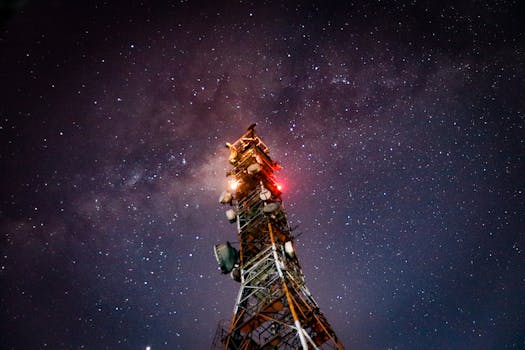
MEO Satellites: Revolutionizing Global Communication with Medium Earth Orbit Technology
Medium Earth Orbit (MEO) satellites are a type of satellite that operates in an intermediate orbit, between 2,000 and 36,000 kilometers above the Earth’s surface. This orbit allows MEO satellites to provide faster and more reliable connections than traditional Geostationary Earth Orbit (GEO) satellites, which are located approximately 36,000 kilometers above the equator.
The use of MEO satellites is becoming increasingly popular, particularly in the field of satellite communication. MEO satellites offer several advantages over GEO satellites, including lower latency, higher bandwidth, and improved mobility. These benefits make MEO satellites an attractive option for a wide range of applications, from broadband internet access to maritime and aeronautical communications.
How MEO Satellites Work
MEO satellites operate in a constellation of multiple satellites, each orbiting the Earth at an altitude of around 20,000 kilometers. This constellation allows for continuous coverage of the Earth’s surface, providing users with seamless and uninterrupted connectivity. MEO satellites use advanced propulsion systems to maintain their orbit and ensure precise positioning, which is critical for providing high-quality communication services.
One of the key benefits of MEO satellites is their ability to provide low-latency connections. Because they are located closer to the Earth’s surface than GEO satellites, MEO satellites can transmit data more quickly, reducing the delay between sending and receiving information. This makes MEO satellites ideal for applications that require real-time communication, such as video conferencing, online gaming, and financial transactions.
Applications of MEO Satellites
MEO satellites have a wide range of applications, from broadband internet access to maritime and aeronautical communications. Some of the most significant applications of MEO satellites include:
Broadband internet access: MEO satellites can provide high-speed internet access to remote and underserved communities, bridging the digital divide and promoting economic development. Maritime communications: MEO satellites can provide critical communication services to ships and vessels at sea, enabling navigation, safety, and operational communications. Aeronautical communications: MEO satellites can provide communication services to aircraft, enabling air traffic control, navigation, and operational communications.
In addition to these applications, MEO satellites are also being used for Earth observation, weather forecasting, and remote sensing. The use of MEO satellites for these applications provides high-resolution imagery and data, enabling scientists and researchers to better understand the Earth’s climate, weather patterns, and natural resources.
Future of MEO Satellites
The future of MEO satellites looks promising, with several new constellations and systems being developed and launched in the coming years. One of the most significant developments is the launch of the O3b constellation, which will provide high-speed internet access to underserved communities around the world. Other notable developments include the launch of the OneWeb constellation, which will provide global broadband coverage, and the development of new MEO satellite systems for maritime and aeronautical communications.
As the demand for satellite communication services continues to grow, the use of MEO satellites is likely to increase, driven by their ability to provide faster, more reliable, and more cost-effective connections than traditional GEO satellites. The development of new technologies, such as advanced propulsion systems and more efficient antenna designs, will also play a critical role in the future of MEO satellites, enabling the creation of more capable and sustainable satellite systems.



